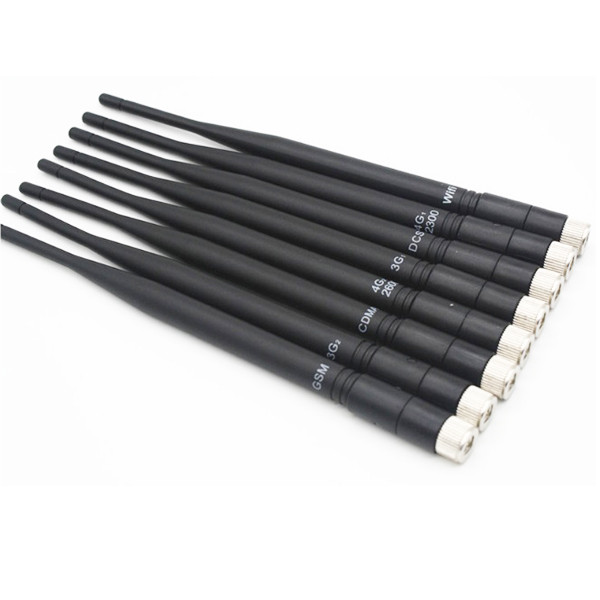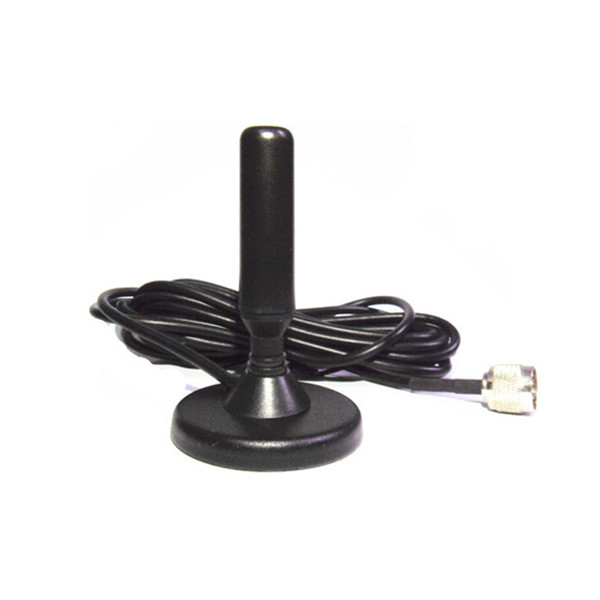
When it comes to selecting the right antenna for your communication needs, Rubber Antenna and Magnetic Base Antenna are two popular options, each with its own strengths and ideal use cases. Both types are widely used in various industries, from emergency services and military applications to consumer electronics and mobile communication. However, their design, functionality, and typical applications differ significantly.
This blog will compare rubber antenna and magnetic base antenna, looking at their unique features, advantages, and best-use scenarios to help you decide which is better suited for your needs.
What is a Rubber Antenna?
A replacement rubber antenna is a flexible antenna encased in durable rubber material, designed to withstand harsh conditions such as outdoor environments, impacts, and exposure to water. These antennas are widely used in portable communication devices and systems that require mobility and durability.
920MHZ Rubber Antenna Gain 6dbi VSWR ≤1.5 with SMA Male Connector XMR-J047
Key Features of Rubber Antennas:
- Flexibility and Durability: Rubber antennas are known for their ability to bend without breaking, making them ideal for rugged conditions.
- Compact Design: Most rubber antennas are short and can be easily integrated into handheld devices like two-way radios.
- Weather Resistance: The rubber casing protects the antenna from weather elements, making it suitable for outdoor use.
- Omnidirectional: Rubber antennas typically transmit and receive signals in all directions, making them versatile in different environments.
Applications of Rubber Antennas:
- Handheld Radios and Walkie-Talkies: Due to their flexible and rugged design, rubber antennas are commonly used in portable communication devices for outdoor activities, military, and emergency services.
- Industrial Equipment: Rubber antennas are found in industrial environments where equipment might be exposed to extreme conditions.
- Personal and Vehicle Radios: Compact models are used in vehicle communication systems and personal radio devices.
What is a Magnetic Base Antenna?
A magnetic antenna base is a type of antenna with a strong magnet attached to its base, allowing it to be securely mounted on metal surfaces like vehicles. Magnetic base antennas are easy to install and remove, offering mobility and flexibility, especially for vehicle-mounted communication systems.
DVB-T2 470-870MHZ Magnetic Base Antenna Gain 5dbi VSWR≤1.5 with SMA/N Connector XMR-X002
Key Features of Magnetic Base Antennas:
- Portable Mounting: The magnetic base allows for quick installation and removal on any metal surface, such as the roof of a vehicle.
- Stable Connection: The strong magnet ensures the antenna remains securely in place, even when the vehicle is in motion.
- Wide Range: These antennas are available in different frequency ranges, including VHF/UHF and CB frequencies.
- Increased Range: Compared to smaller rubber antennas, magnetic base antennas can provide better range and signal quality due to their longer and higher-positioned structure.
Applications of Magnetic Base Antennas:
- Vehicle Communication Systems: Magnetic base antennas are commonly used in cars, trucks, and emergency vehicles for radios, GPS, and CB communications.
- Temporary Base Stations: In situations where a quick setup is required, magnetic base antennas can be easily mounted and used to establish a temporary communication system.
- Mobile Radio Operations: Amateur radio operators and hobbyists frequently use magnetic base antennas for their ease of use and ability to provide enhanced range.
Key Differences Between Rubber Antennas and Magnetic Base Antennas
Advantages of Rubber Antennas
Durability
Rubber antennas are designed to withstand rough environments. The rubber casing protects the internal components from damage caused by drops, impacts, and harsh weather conditions. This makes them ideal for outdoor use and in industries where equipment might experience physical wear and tear.
Flexibility
The flexible nature of rubber antennas ensures they can bend and move without breaking, making them ideal for portable and handheld devices such as radios and GPS systems. Their flexibility also reduces the risk of damage during transportation or accidental bumps.
Versatility
Rubber antennas are versatile in their applications, ranging from personal communication devices to emergency radios and industrial equipment. They are commonly used in environments where rugged and compact antennas are necessary.
Advantages of Magnetic Base Antennas
Easy Installation and Removal
One of the most significant benefits of magnetic base antennas is their ease of use. They can be quickly installed on any metal surface, such as a car roof, without requiring any permanent modification or drilling. This makes them ideal for temporary setups or situations where mobility is essential.
Superior Signal Range
Due to their longer design and ability to be mounted on higher surfaces, magnetic base antennas typically offer a better signal range compared to rubber antennas. This makes them ideal for vehicle communication systems where a strong, reliable signal is needed over greater distances.
Versatility in Placement
Magnetic base antennas can be easily moved and repositioned for optimal performance, whether on a vehicle, metal structure, or other surfaces. This adaptability is especially useful in scenarios where signal strength varies based on the environment.
Which One Should You Choose?
The choice between a rubber antenna and a magnetic base antenna depends on your specific needs and use cases.
Choose a Rubber Antenna if:
- You need a durable, flexible antenna for handheld devices such as two-way radios or walkie-talkies.
- You require an antenna that can withstand rough handling or outdoor conditions.
- Portability and ruggedness are more important than signal range.
Choose a Magnetic Base Antenna if:
- You need an antenna for vehicle-mounted communication systems, such as CB radios or emergency vehicles.
- You want an easy-to-install solution that can be quickly mounted or removed from metal surfaces.
- Signal range is a key factor, especially in mobile or wide-area communication.
Conclusion
Both rubber antennas and magnetic base antennas offer distinct advantages based on the specific requirements of your communication setup. Rubber antenna replacement excel in flexibility, durability, and portability, making them perfect for handheld devices and rugged environments. Magnetic base cb antenna on the other hand, provide superior signal range, easy installation, and mobility, making them ideal for vehicle-mounted and mobile communication systems.
Ultimately, the choice between these two antenna types depends on your priorities—whether it's rugged portability or enhanced signal strength and ease of installation. By understanding their unique features and applications, you can make an informed decision that best suits your communication needs.
Related Articles
- A Comprehensive Guide to Coaxial RF Connectors2025-01-08
- Custom Antenna Design for High-Performance Wireless Systems2024-12-24
- Understanding RFID Antenna and VHF/UHF Antenna: Functions, Types, and Benefits2024-12-17
- Choosing the Best LoRa Antenna for Your IoT Applications2024-12-11
- 10 Key Factors to Consider When Choosing an RF Connector2024-12-05
Contact us with the RF and Microwave coaxial connectors, RF cable assemblies and Antennas.
Get A Quote

XIAOMA is a supplier specializing in the R&D and manufacturing of RF CONNECTORS,CABLE ASSEMBLY AND ANTENNAS products. It also provides one-stop radio frequency solutions for electronic equipment. XIAOMA Technology's products are widely used in consumer electronics, communication equipment and infrastructure, mobile terminals and automotive electronics.
Contact Info
Contact Person : Rick, Haifa
Wechat / WhatsApp: + 86 18651023520
Follow
Share
Download after filling out the form

